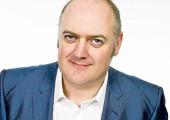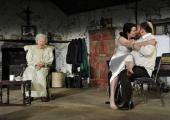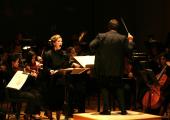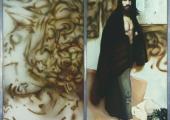Dara Ó Briain, Hammersmith Apollo

The quick-witted host of Mock the Week is surprisingly light on his feet, too
At 6ft 4in, Dara Ó Briain is a massive bloke. With his bald, cannon-ball head and barrel-chested torso – togged out in a suit – he looks like a bulldog that's acquired a tailor. But it is not, of course, his physical build that has made this affable Irishman a huge name in the entertainment industry. What's key to his popular appeal is his "ordinary bloke" manner combined with his gift of the gab and his quick mind.









